 Indians Archive
Indians Archive  Looking at the Rotation on a Lazy Sunday
Looking at the Rotation on a Lazy Sunday
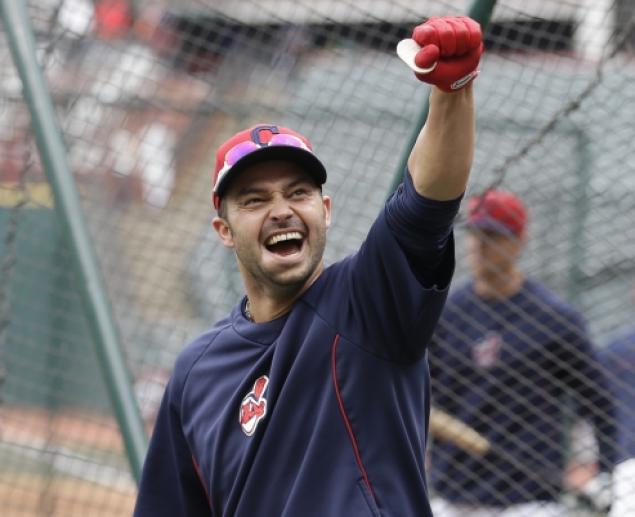 After a roller-coaster start to the 2013 season, the Indians enter this Lazy Sunday with a very appropriate record of 5 wins and 5 losses. It could be better, but it could also be worse. The new outfield has come as advertised, with Brantley, Bourn and Stubbs running down flyballs all over the outfield. Mark Reynolds has hit some titanic shots, and struck out a few times as well. Nick Swisher’s excitement and leadership has been infectious, and his walk-off single on Friday helped secure Masterson a victory in a lights-out pitching performance. And the starting rotation, which came in to the season with question marks, has also both lived up to and pitched down to preseason expectations. The Indians have already used six starting pitchers this year, and only back-to-back rain delays prevented them from using a seventh. The performance of those six starters has ranged from great (Masterson) to terrible (Brett Myers), and one has been Carlos Carrasco, whose outing against the Yankees must be considered in a classification all of its own. As Anthony Castrovice summed up expertly earlier this week, the Indians start has been nothing if not interesting. It’s still awfully early, but we can take the information we have to make some judgments about the starting rotation based on our expectations going into the 2013 season. So with that, let’s set off on a pitching-centric Lazy Sunday here in early April…
After a roller-coaster start to the 2013 season, the Indians enter this Lazy Sunday with a very appropriate record of 5 wins and 5 losses. It could be better, but it could also be worse. The new outfield has come as advertised, with Brantley, Bourn and Stubbs running down flyballs all over the outfield. Mark Reynolds has hit some titanic shots, and struck out a few times as well. Nick Swisher’s excitement and leadership has been infectious, and his walk-off single on Friday helped secure Masterson a victory in a lights-out pitching performance. And the starting rotation, which came in to the season with question marks, has also both lived up to and pitched down to preseason expectations. The Indians have already used six starting pitchers this year, and only back-to-back rain delays prevented them from using a seventh. The performance of those six starters has ranged from great (Masterson) to terrible (Brett Myers), and one has been Carlos Carrasco, whose outing against the Yankees must be considered in a classification all of its own. As Anthony Castrovice summed up expertly earlier this week, the Indians start has been nothing if not interesting. It’s still awfully early, but we can take the information we have to make some judgments about the starting rotation based on our expectations going into the 2013 season. So with that, let’s set off on a pitching-centric Lazy Sunday here in early April…
So far in 2013, we’ve seen the return of the Justin Credible version of Masterson, as the Indians ace is reminding Tribe fans of his fantastic 2011 season. With Friday’s complete-game shutout victory over the White Sox, Masteron moved to 3-0 this year. He’s allowed just a single earned run in 22 IP while striking out 20 and walking 8. If you want to pick nits, the 8 walks are a couple more than we would prefer to see, but with Masterson allowing just 10 hits his WHIP is still a paltry 0.818. Per Elias, Masterson is one of two Indians pitchers to ever win his first three starts of the season while allowing one run or less. The other pitcher was Luis Tiant, who accomplished the feat when he opened the 1966 campaign with three straight shutouts. Masterson’s ERA+ currently stands at a league-leading 1074. That is probably an unsustainable number, but it helps to illustrate just how much better Masterson has been in comparison to the rest of the American League. His velocity is already in the mid to high 90’s, a level that it did not reach until May of 2013. His sinker is sinking, and he’s commanding the slider well to both sides of the plate when he’s needed it. His GO/AO ratio is an outstanding 2.15, which is high even for Masterson. The noted groundball artist isn’t going to benefit from the improved OF defense as much as some of the other members of the staff, but having the firm of Brantley, Bourn and Stubbs patrolling the grass certainly isn’t going to hurt him, either. One of the big “ifs” coming into this season was the question of whether or not Masterson could re-establish himself as legit front of the rotation arm. It’s still awfully early, but so far the returns on that question are extremely encouraging.
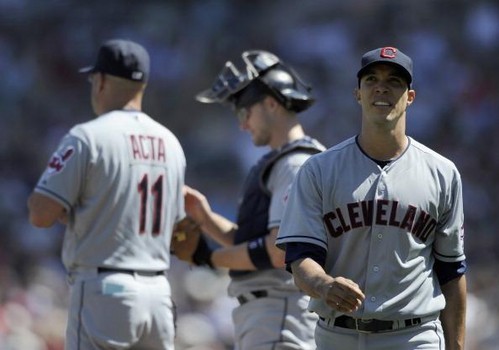 The excitement of the home opener was dampened in a big way by the incredibly disappointing performance of starting pitcher Ubaldo Jimenez. Coming off of a 3-3 roadtrip against what will likely be the 1st and 2nd place teams in the AL East this year, the new-look Indians were returning home against the hated Yankees, a team that stumbled their way to a high-priced 2-4 start. These are not the powerhouse Yankees of years past, as injuries and age are finally catching up with the Bronx Bombers. The Yankees came into Cleveland starting Travis Hafner as their cleanup hitter, Vernon Wells in the 5-hole, Eduardo Nunez at SS, Lyle Overbay at 1B and Chris Stewart behind the plate. A far cry from the A-Rod, Jeter, Texieria and Posada of old. There was blood in the water, and we all expected that this was the series that the Indians could pound the despised pinstripes from NY. Alas, it was not to be. Hafner helped the Yankees jump out to an early lead with a 3-run HR in the top of the 1st (wow, that sentence felt weird to type), and while the Indians struck with three in the bottom of the first to equalize, Ubaldo just couldn’t get outs. He allowed 7 ER on 7 hits in 4 1/3 innings, and even compared to his disastrous 2012 he didn’t have very good stuff. Ubaldo’s fastball sat in the high-80’s during the opener, a far, far cry from the high-90’s heat he featured as an ace in Colorado. The Indians, via PD reporter Paul Hoynes, explained that the radar gun responsible for the PITCHf/x data was faulty, resulting in the slow readings displayed on the stadium radar gun. Wait, what??
The excitement of the home opener was dampened in a big way by the incredibly disappointing performance of starting pitcher Ubaldo Jimenez. Coming off of a 3-3 roadtrip against what will likely be the 1st and 2nd place teams in the AL East this year, the new-look Indians were returning home against the hated Yankees, a team that stumbled their way to a high-priced 2-4 start. These are not the powerhouse Yankees of years past, as injuries and age are finally catching up with the Bronx Bombers. The Yankees came into Cleveland starting Travis Hafner as their cleanup hitter, Vernon Wells in the 5-hole, Eduardo Nunez at SS, Lyle Overbay at 1B and Chris Stewart behind the plate. A far cry from the A-Rod, Jeter, Texieria and Posada of old. There was blood in the water, and we all expected that this was the series that the Indians could pound the despised pinstripes from NY. Alas, it was not to be. Hafner helped the Yankees jump out to an early lead with a 3-run HR in the top of the 1st (wow, that sentence felt weird to type), and while the Indians struck with three in the bottom of the first to equalize, Ubaldo just couldn’t get outs. He allowed 7 ER on 7 hits in 4 1/3 innings, and even compared to his disastrous 2012 he didn’t have very good stuff. Ubaldo’s fastball sat in the high-80’s during the opener, a far, far cry from the high-90’s heat he featured as an ace in Colorado. The Indians, via PD reporter Paul Hoynes, explained that the radar gun responsible for the PITCHf/x data was faulty, resulting in the slow readings displayed on the stadium radar gun. Wait, what??
Forgetting for a moment that Ubaldo’s decline in velocity has been a concern since even before the Indians acquired him from the Rockies, this explanation just doesn’t pass the smell test. And neither does it hold up to closer inspection; the other pitchers in the game did not show a similar decline in velocity from their previous appearances this season. My TCF colleague Adam Burke doesn’t buy it, and helped to pull together some links on the issue. Kyle Boddy of the Hardball Times was gracious enough to do all of the necessary research for us, so I’ll just steer you to this link for the full explanation. It doesn’t seem as though the other pitchers in the game were affected by the slow radar gun that plagued Ubaldo. Was the gun really off? Who knows. I don’t understand why the Indians would say so if it were not, and I certainly don’t know who within the organization actually provided Hoynes with that info. It could have been a well-meaning lower-level source within the org who was trying to get Ubaldo to relax, trust in himself and quit trying to throw the ball through a brick wall at the expense of pitch location. But what I do know is that there’s something wrong with Ubaldo Jimenez. There’s something wrong with his arm, with his mechanics, and likely between his ears as well. And despite the multitude of opinions on what’s happening with his mechanics and what to do to fix them, a long-term solution has yet to present itself. There may be a few more starts this year where Ubaldo finds some measure of success, similar to the one in Toronto in the season’s opening series. But unless something dramatic happens, I don’t see him sticking in the Indians rotation for all of of 2013.
Of all of the free agent additions this offseason, only one looked to improve the starting rotation. The Indians gave the 32-year old Brett Myers a $7 million contract to stabilize the middle of the Indians rotation, hoping he’d return to his innings-eating form of 2011/2010 when he posted a combined 3.79 ERA in 439 2/3 innings for the Houston Astros. Myers has made two appearances (one start) this year, and has given up 14 earned runs in just 10 1/3 IP. He’s allowed 7 HR in that timeframe, which would be high even if he were the Indians batting practice pitcher. By any measure, Myers has been downright awful here in 2013. But I’m actually a lot less worried about him than I am some of the other members of the Cleveland rotation. Myers is a proven commodity at this point in his career, a guy who hasn’t posted an ERA over 4.84 since 2004. He doesn’t have to go out and contend for the Cy Young award this year, he just has to go out and give the Indians 5+ innings and turn the ball over to the bullpen with the Indians offense still in the game. I still think Myers can do that, and believe he has earned the benefit of the doubt as a veteran pitcher who has been getting the job done despite a decline in his stuff from early in his career. If he still has a 12.19 ERA in May, I’ll be concerned. But I’m willing to give him a grace period in his return to the rotation, and think that other Indians fans should feel the same. There are plenty of other issues with the starting rotation to keep us busy while we give Myers a bit of a grace period to settle down in his new/old role as a starting pitcher.
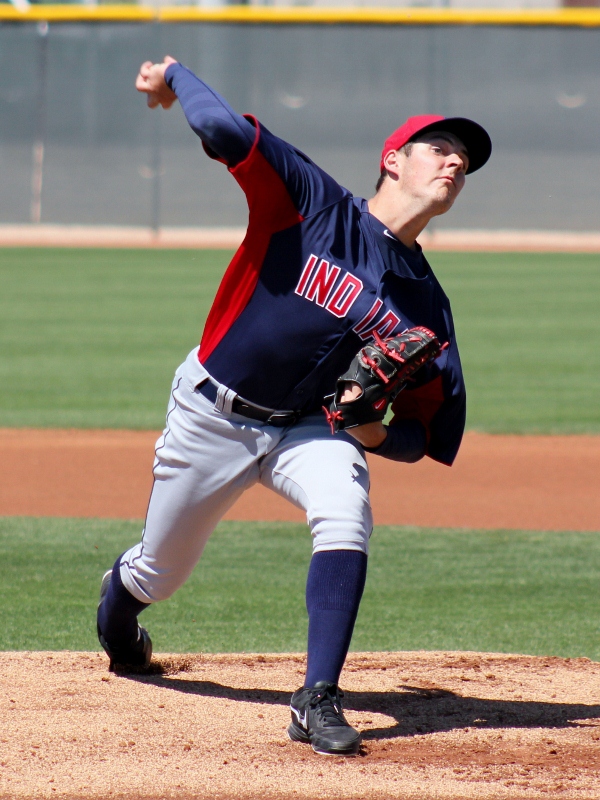 To paraphrase former Arizona Cardinals head coach Denny Green, Trevor Bauer is what we thought he is so far here in 2013. Bauer is immensely talented, throws several above-average to plus pitches, and both walks and strikes out a lot of hitters. He’s made one start in Cleveland and one in Columbus, going a combined 1-1 while allowing 4 ER on 6 hits in 11 innings pitched, striking out 11 and walking 10. That’s more or less what we expected out of the 22-year old righty when the Indians acquired him this offseason, although I was of course hoping for fewer walks. Bauer is the most talented pitcher in the Indians organization, and that includes Justin Masterson. If the Indians are going to make a playoff run in 2013, Bauer is going to have to play a major role for the big club at some point this season. And for that to happen, he’s going to have to improve his command and control to a point where he’s walking fewer than four hitters per 9 IP. His ability to miss bats and record strikeouts means that he’ll be able to survive with a higher walk rate than most, but more than one free pass per inning just isn’t sustainable. I’ve written about this in the past, but Bauer needs to trust his stuff and throw strikes rather than trying to make the perfect pitch in every situation. As the great Crash Davis once said, “Quit trying to strike everyone out. Strikeouts are boring, and besides that they’re fascist. Throw some more groundballs…they’re more democratic.” Bauer is young enough that he could use some time to develop in the minors, but the Indians don’t necessarily have the same luxury. Their starting pitching is in a state where they need Bauer in order to contend for the World Series, whether that happens in 2013 or in the future. Regardless of when it happens, I fully expect Bauer to be in the rotation to stay ay some point this year, likely at the expense of Ubaldo Jimenez.
To paraphrase former Arizona Cardinals head coach Denny Green, Trevor Bauer is what we thought he is so far here in 2013. Bauer is immensely talented, throws several above-average to plus pitches, and both walks and strikes out a lot of hitters. He’s made one start in Cleveland and one in Columbus, going a combined 1-1 while allowing 4 ER on 6 hits in 11 innings pitched, striking out 11 and walking 10. That’s more or less what we expected out of the 22-year old righty when the Indians acquired him this offseason, although I was of course hoping for fewer walks. Bauer is the most talented pitcher in the Indians organization, and that includes Justin Masterson. If the Indians are going to make a playoff run in 2013, Bauer is going to have to play a major role for the big club at some point this season. And for that to happen, he’s going to have to improve his command and control to a point where he’s walking fewer than four hitters per 9 IP. His ability to miss bats and record strikeouts means that he’ll be able to survive with a higher walk rate than most, but more than one free pass per inning just isn’t sustainable. I’ve written about this in the past, but Bauer needs to trust his stuff and throw strikes rather than trying to make the perfect pitch in every situation. As the great Crash Davis once said, “Quit trying to strike everyone out. Strikeouts are boring, and besides that they’re fascist. Throw some more groundballs…they’re more democratic.” Bauer is young enough that he could use some time to develop in the minors, but the Indians don’t necessarily have the same luxury. Their starting pitching is in a state where they need Bauer in order to contend for the World Series, whether that happens in 2013 or in the future. Regardless of when it happens, I fully expect Bauer to be in the rotation to stay ay some point this year, likely at the expense of Ubaldo Jimenez.
And then we have Carlos Carrasco. I had (have) high expectations for Carrasco this year. He’s the 2nd or 3rd most talented pitcher in the Indians organization right now. He has the stuff to be a #2 starter in a major league rotation, something the Indians desperately need. He pitched well in stretches in 2011 before going down in September with an elbow injury that required Tommy John surgery. He was showing glimpses of his potential in his return to the rotation last week, sitting consistently in the mid to high-90s with his fastball and flashing an above-average slider. He was struggling to locate his pitches, and had given up 7 ER in 3 2/3’s of an inning before drilling Kevin Youkilis with a pitch which resulted in Carrasco being ejected from the contest. I’m much, much less worried about the lack of command than the HBP. It was Carrasco’s first major league appearance since undergoing the surgery; it’s well known that both fastball command and consistent secondary pitches take some time to re-emerge after TJ. My main concern is that very little about Carrasco has changed since his days as a prospect in the Phillies organization. Allow me to cut and paste from the great Kevin Goldstein’s Phillies top-11 prospect list following the the 2008 season:
The Good: Carrasco is the total package, combining a power frame with three above-average pitches and plus command. His fastball sits in the low 90s and can touch 94 mph, but his best pitch is an outstanding changeup with plenty of late life. He also has a nice curveball that he can throw for strikes or use as a chase pitch.
The Bad: Carrasco doesn't have a real out pitch in his arsenal, as none of his offerings are plus-plus. He's had a career-long habit of turning bad innings into horrible ones; in clutch situations he tends to shy away from contact and falls behind in the count. (bold my emphasis)
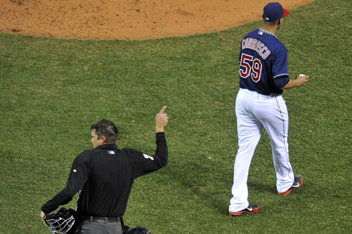 When you go back and read Carrasco’s scouting reports in the minor leagues, they’re full of comments like this. All rave about his talent on the mound, but nearly all also caveat that by commenting on his struggles with the mental side of the game. He’s always been a guy who’ll let an inning get away from him to the point where he takes himself out of the game, sometimes literally. Even as he was delivering the pitch that hit Youkilis, he looked like he wanted to be anywhere other than on the center of the diamond at the corner of Carnegie and Ontario.
When you go back and read Carrasco’s scouting reports in the minor leagues, they’re full of comments like this. All rave about his talent on the mound, but nearly all also caveat that by commenting on his struggles with the mental side of the game. He’s always been a guy who’ll let an inning get away from him to the point where he takes himself out of the game, sometimes literally. Even as he was delivering the pitch that hit Youkilis, he looked like he wanted to be anywhere other than on the center of the diamond at the corner of Carnegie and Ontario.
Physical flaws in a pitcher are difficult enough to correct (just ask Ubaldo Jimenez). But changing muscle memory, while difficult, is possible and has been done in the past with many a pitcher to career-changing results. Mental flaws are much more difficult to conquer. I’m not going to pretend to know anything at all about psychology or other such things, but I’ve played the game and know how difficult it is to change ones nature. Coaches, teammates, psychologists and family members can talk to Carrasco all they want and try to get him to calm down and be more mentally tough. But to fundamentally change the way you think about a game you’ve been playing since you were a kid is not something that just happens. Off the field, Carrasco is a soft-spoken, nice guy. I watched him spend nearly an hour of his time with a church youth group in the Goodyear complex this spring, signing autographs and talking with the kids. But when he steps between the lines, something happens that causes him to lose focus and his composure. Are we to the point where Carrasco simply is what he is? At age 26, I certainly hope not, but the possibility exists. Carrasco was optioned down to AAA Columbus after his disastrous outing against the Yankees, and it will be interesting to see when we see him in Cleveland again. He maintains that the pitch that hit Youkilis was an accident; I and most fans don’t see it that way. He has the talent to be the Indians #2 starter as soon as this year, but it remains to be seen whether he can advance his mental game to the point where that talent plays consistently on the field.
Like most of you, I have a strong dislike for the New York Yankees. Always have, probably always will. I didn’t like them when I was a kid, and that dislike grew in my formative years when the Indians were constantly battling the pinstripes for AL supremacy. I don’t like their players, their ownership, their stadium and especially their obnoxious fanbase. But what Mariano Rivera is doing this season is pure class. Rivera has announced that this will be his final season in the major leagues, and with the Yankees making just one scheduled trip to Cleveland this year he wanted to meet with some of the behind the scenes people in the Indians organization to say thanks. Anthony Castrovice details the visit in an outstanding article, telling of how Rivera asked to meet John Adams, and discussed the famous 1997 HR that Sandy Alomar hit off of him in Jacobs Field during the playoffs. Rivera holds that home run as one of the most important moments of his career, saying that “If that wouldn’t have happened, God only knows where I would have ended up. But because that happened, it pushed me to be better in moments like that and in situations like that.” I’m sure the rest of the league would prefer that Alomar’s home run didn’t unleash the full fury of Rivera’s dominance in 9th innings throughout his career, but it sure worked out well for the Yankees. Despite my dislike for the Yankees as a franchise, it’s impossible not to acknowledge what Rivera is doing in his farewell tour around baseball.
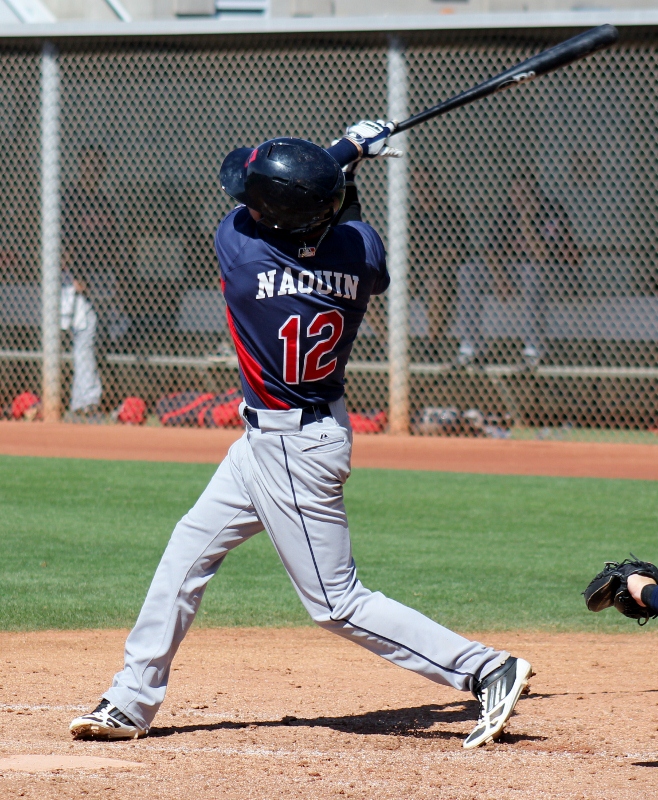 If you’re looking for a minor league fix, I’m back to doing my daily “Around the Farm” recap of the Indians system on The Cleveland Fan. I’ll have more detailed articles on individual players as the season goes on, but hopefully you’re finding the ATF’s are a good way to keep tabs on the day to day goings on within the system. That being said, I do want to highlight the performances of a couple of players here for you today. The Indians 2011 1st round pick and consensus top-10 prospect in all of baseball, Carolina Mudcats SS Francisco Lindor has started off the season on fire. After Friday night’s game, Lindor has hit in all seven games this season, going 12-28 with two triples, a double and five stolen bases. He’s hitting .429/.484/.607 while playing outstanding defense at SS, and is living up to the lofty expectations that Indians fans have for the 19-year old shortstop. Not to be outdone, his teammate in Carolina and fellow 1st round draft pick Tyler Naquin has hit in 5 of 7, going 11-30 with a HR, 3B, 2 2B and 6 RBI from the leadoff spot in the Mudcats lineup. It’s early in the season and all of the standard small sample size caveats apply, but it’s great to see these two get off to such a hot start. The Indians remain loaded with up the middle talent throughout the organization, and the continued development of these two players is going to be key to a future window of contention for this Indians franchise.
If you’re looking for a minor league fix, I’m back to doing my daily “Around the Farm” recap of the Indians system on The Cleveland Fan. I’ll have more detailed articles on individual players as the season goes on, but hopefully you’re finding the ATF’s are a good way to keep tabs on the day to day goings on within the system. That being said, I do want to highlight the performances of a couple of players here for you today. The Indians 2011 1st round pick and consensus top-10 prospect in all of baseball, Carolina Mudcats SS Francisco Lindor has started off the season on fire. After Friday night’s game, Lindor has hit in all seven games this season, going 12-28 with two triples, a double and five stolen bases. He’s hitting .429/.484/.607 while playing outstanding defense at SS, and is living up to the lofty expectations that Indians fans have for the 19-year old shortstop. Not to be outdone, his teammate in Carolina and fellow 1st round draft pick Tyler Naquin has hit in 5 of 7, going 11-30 with a HR, 3B, 2 2B and 6 RBI from the leadoff spot in the Mudcats lineup. It’s early in the season and all of the standard small sample size caveats apply, but it’s great to see these two get off to such a hot start. The Indians remain loaded with up the middle talent throughout the organization, and the continued development of these two players is going to be key to a future window of contention for this Indians franchise.
Finally, from the credit where credit is due department; MLB has made some improvements to their MLB TV ap, making it an even better product than it was last season. Living out of the Cleveland viewing area as I do, MLB Extra Innings or MLB TV is a necessity. I used to get MLB Extra Innings through cable, but found that to be sorely lacking. For $200 a season, I got to watch standard definition games with other teams announcers. Listening to Hawk Harrleson is bad enough, but listening to him without even the luxury of HD video? And for $200?? Not much of a deal if you ask me. Fortunately, MLB TV is available on your computer, tablet, Xbox, Playstation etc. MLB TV is always in HD, gives you choices of which announcers to listen to, and costs “just” $130. It also includes the MLB At Bat ap for your phone, which means the ability to listen to Tom Hamilton anytime, anywhere. That alone is nearly worth the price. During the games, MLB TV displays pitch FX data in real time, showing us exactly where pitches did (or did not) cross the strike zone and at what speed, break etc. It also provides real-time access to highlights around the league, something that’s particularly useful the day after the west coast games that end well after I go to bed. In fact, it makes watching baseball highlights on the four-letter network obsolete and unnecessary, as all of the webgems, home runs and everything in between are available on-demand at your fingertips. I’m not a paid endorser of MLB TV or anything, but I really am happy with the product they’re putting out this season. Compared to the NFL, who seems bound and determined to restrict access to their product as much as possible, it’s refreshing to have options to follow your favorite team from out of town. Now if only they could fix that Fox exclusive window at 4pm on Saturdays…
- NBA Announces 2013-2014 Schedule
- Browns Ink Sharknado
- Sharknado A No-Show For Rookie Camp
- Trent Richardson Out Until Training Camp
- Browns Sign Brandon Jackson
- Carrasco Suspended Eight Games
- Browns Add to Wide Receiver Depth with David Nelson
- Browns Need to Learn from Past Draft Mistakes
- Browns Release Chris Gocong and Usama Young
- Browns Missing on Grimes Disappointing, But Not The End
The TCF Forums
- Chris Grant's first 3 drafts
Kingpin74 (Tuesday, January 21 2014 10:13 AM) - The 2014 Offseason Thread
googleeph2 (Tuesday, January 21 2014 9:36 AM) - 2015 Recruiting
furls (Tuesday, January 21 2014 6:57 AM) - Mike Brown
YahooFanChicago (Monday, January 20 2014 11:15 PM) - Movies coming out
HoodooMan (Monday, January 20 2014 9:34 PM) - 2014 Hoops Hockey Hijinx
jpd1224 (Monday, January 20 2014 4:44 PM) - 2014 Recruiting
jclvd_23 (Monday, January 20 2014 2:26 PM) - Wish List - #4 Pick
Hikohadon (Monday, January 20 2014 1:26 PM) - Official- Browns Coach Search/Rumors
OldDawg (Sunday, January 19 2014 6:48 PM) - #1 overall pick Anthony Bennett
TouchEmAllTime (Sunday, January 19 2014 1:28 PM)


